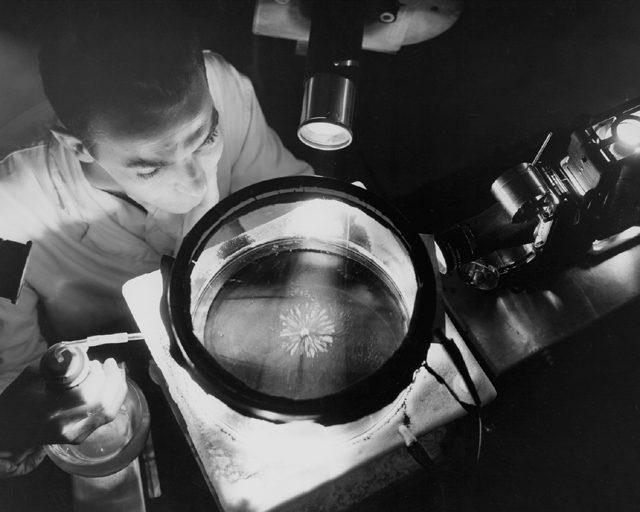Space History Photo: NACA Physicist Studying Alpha Rays

In this historical photo from the U.S. space agency, NACA Physicits studying Alpha Rays in a continuous cloud chamberon Sept. 12, 1957. A cloud chamber is used by Lewis scientists to obtain information aimed at minimizing undesirable effects of radiation on nuclear-powered aircraft components.
Here, alpha particles from a polonium source emit in a flower-like pattern at the cloud chamber's center. The particles are made visible by means of alcohol vapor diffusing from an area at room temperature to an area at minus -78 deg. Centigrade. Nuclear-powered aircraft were never developed and aircraft nuclear propulsion systems were canceled in the early 1960s.
The National Advisory Committee on Aeronautics (NACA) was a precursor to NASA. NACA was created by Congress in 1915.
Each weekday, SPACE.com looks back at the history of spaceflight through photos (archive).
Breaking space news, the latest updates on rocket launches, skywatching events and more!

The National Aeronautics and Space Administration (NASA) is the U.S. government agency in charge of the civilian space program as well as aeronautics and aerospace research. Founded in 1958, NASA is a civilian space agency aimed at exploring the universe with space telescopes, satellites, robotic spacecraft, astronauts and more. The space agency has 10 major centers based across the U.S. and launches robotic and crewed missions from the Kennedy Space Center in Cape Canaveral Florida. Its astronaut corps is based at the Johnson Space Center in Houston. To follow NASA's latest mission, follow the space agency on Twitter or any other social channel, visit: nasa.gov.
